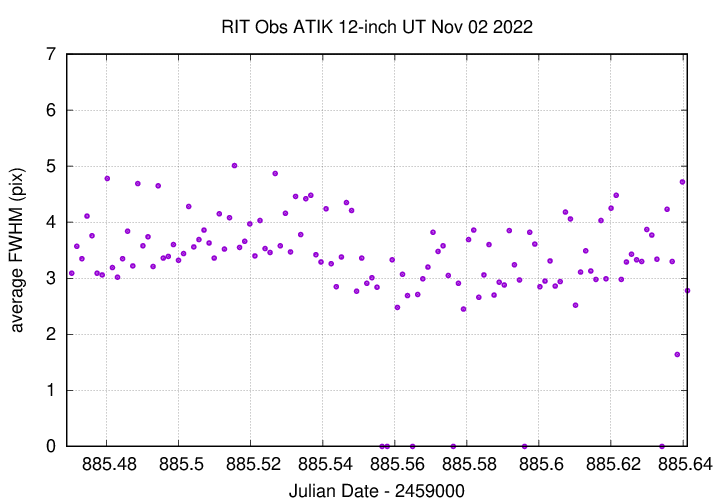
On the night of Nov 01/02, 2022, I (again) observed the eclipsing binary star V1004 Cyg for a capstone project. I was (again) hoping to capture the one section of its light curve that we need to confirm, but the weather (again) did not cooperate. I did make some half-decent measurements during the first and last hours of the run, and it might help to add those small segments to the light curve.
We acquired images of the eclipsing binary system V1004 Cyg as part of a capstone project.
The main setup was:
Notes from the night:
The object is located at
RA = 19:50:29.44 Dec = +33:08:32.2 (J2000)
A chart of the field is shown below. The size of the chart is about 31 x 26 arcminutes.

I've marked the location of several comparison stars as well. You can find reference magnitudes for these stars at the AAVSO:
I used to use the star marked as "C" in the picture above, or "118" in the AAVSO charts, to shift the instrumental magnitudes to the standard scale.
I took a photo of the finder TV's screen when pointing to this target; this could be a useful reference for the future:

The sky value shows lots of clouds in the middle.

The FWHM graph below shows a nice PSF early, even better after I made a slight adjustment.

Using aperture photometry with a radius of 10 pixels in B and V (binned 2x2, each pixel is 1.24 arcsec, so a radius of 12.4 arcsec), I measured the instrumental magnitudes of a number of reference stars and the target. Following the procedures outlined by Kent Honeycutt's article on inhomogeneous ensemble photometry, I used all stars available in each image to define a reference frame, and measured each star against this frame.
Sigma-vs-mag plots show that the floor was about 0.009 mag in V. Not very good. Stupid clouds.

The change in zeropoint shows big variations due to clouds in the middle.

This incomplete dataset doesn't fill the gap in the overall light curve fully.
